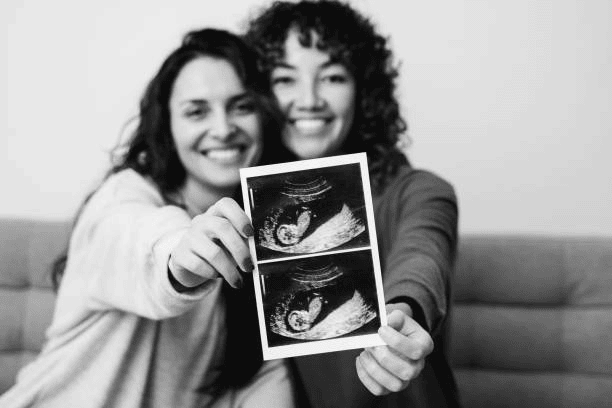You’ve most likely heard the term “surrogate” before. Perhaps it was in celebrity news, television, or in general conversation, but what is surrogacy? Surrogacy is a form of assisted reproductive technology where a woman agrees to carry and give birth to a child on behalf of another parent/couple, to give custody and guardianship of the baby to the intended parent(s) after its birth.
Although it may sound like a simple arrangement, surrogacy involves complex legal and medical processes. The process may include medical risks and psychological risks. It’s important to consider the following information and seek independent legal advice where needed.
The following article will address the most frequently asked questions. Firstly, what is surrogacy? And second, how does Australia regulate surrogacy arrangements?
The Case of Baby Gammy
The question ‘what is surrogacy?’ and the ethical issues surrounding surrogacy arrangements were present in the 2014 case of ‘Baby Gammy’. Gammy was born to a Thai surrogate who was hired by Australian intended parents. Born with Down syndrome and a hole in his heart, Gammy was left in Thailand. Meanwhile, the intended parents chose to take his healthy twin sister back to Australia. This case raised major international concerns.
Surrogacy and Its Other Types
‘What is surrogacy?’ is a complex question that requires us to look into a number of forms of arrangements.
Altruistic vs. Commercial Surrogacy
Surrogacy laws in Australia refer to two (2) types of surrogacy: “altruistic” and “commercial”.
Altruistic arrangements, which Australia permits, occur where a surrogate does not receive any financial compensation, apart from any “reasonable” medical expenses.
In contrast, commercial arrangements, also referred to as “compensated” surrogacy, occurs where the surrogate receives payment for their involvement. These forms of arrangements that apply a “free market” philosophy, are generally illegal in Australia.
Current Legal Framework
Indeed, Australia prohibits paid advertisements for surrogates, professional recruitment agencies, and the payment of surrogates beyond medical expenses. Hence, Australians can only access altruistic surrogacy from within their own circle of family and friends or via social media forums.
Traditional vs. Gestational Surrogacy
While it has become a less common method, traditional surrogacy still exists. This is where the surrogate’s egg is used, making her the child’s genetic mother. A successful gestational surrogate pregnancy happens when the gestational surrogate undergoes IVF and carries a child produced from the eggs of another woman, and the donor sperm of the intended father.
Who Can Enter Into a Surrogacy Arrangement?
Now that we’ve answered the main question, ‘what is surrogacy?’ There are a few key factors to consider when looking into entering a surrogacy arrangement.
Firstly, an intended parent living in NSW is subject to the laws within the Surrogacy Act 2010 (NSW) which defines what is surrogacy under section 5, and also provides rules and regulations around surrogacy arrangements. This is the case regardless of whether or not your surrogate resides in NSW or another state. Subject to these laws, any person, regardless of sex, relationship status or sexual orientation can be an intended parent. Unlike a number of states, NSW also allows surrogacy even if the surrogate has never given birth before. However, it is important to note that the surrogate must be at least twenty-five (25) years old.
Like most jurisdictions, NSW requires either a medical (e.g. a woman has a health condition that makes pregnancy dangerous) or social reason (e.g. a same-sex couple) for the arrangement. In NSW, it is also an offence for people to enter into an international commercial surrogacy arrangement. Not only is this fraught with legal concerns over the legal status of the child upon returning to Australia, but if found guilty, people can be subject to a fine and/or imprisonment.

Can a Surrogate Mother Keep the Baby?
Once we’ve clarified what surrogacy is, one of the most frequently asked questions by intended parents considering surrogacy in Australia is “What if she wants to keep the baby?” In terms of the law, there are a number of factors to consider when answering this question.
Under the Surrogacy Act 2010 (NSW), surrogacy arrangements are not enforceable. This means that there exists no obligation upon the birth parent to relinquish their role in the child’s life. Basically, intended parents cannot force a surrogate to hand over the child. Instead, they can go to the Family Court, where the decision of who is granted parentage rights is based on the child’s best interests. The rationale behind these laws is that to have a contract on a baby would be akin to child trafficking.
These unfortunate circumstances were similar in the American case ‘Baby M’, where Mary Beth Whitehead, who was the surrogate mother at the time, refused to hand over the child to the intended parents. In that case, the judge ordered the birth Mother to hand over the child as she was bound by contract.
However, if similar circumstances were to arise in Australia, the contract would be enforceable. Instead, the Court would need to apply the “best interests” test, as established by Justice Brown in Re Mark.
As scary as that may sound, Australia is yet to have a reported case in which a surrogate mother has contested the parenting order.
Establishing Parenthood
Every time a child is born, parents need to register the child’s birth. These same rules apply when it comes to a child born via surrogate birth. Under Australian law, the general principle is that the woman who gave birth to a child is the mother of that child. In NSW, this legal presumption exists, notwithstanding the existence of a surrogacy arrangement between the surrogate and the intended parents.
How to Apply for a Parentage Order
However, with the Surrogacy Act in 2010, the transfer of parentage of a child of a surrogacy arrangement can be formalised in the Supreme Court of NSW. Intended parents can achieve this via an application for a parentage order. Once the court grants a parentage order the intended parents gain full responsibility for the child. Afterwards, a new birth certificate is issued which registers the details of the intended parents, as opposed to the birth parents.
Pre-conditions
Compulsory pre-conditions
Several pre-conditions intending parents must satisfy to successfully apply for a parentage order. Such conditions are available under Division 4 of the Surrogacy Act 2010 (NSW), and include:
- Parents must satisfy the Court that the making of the parentage order is in the best interests of the child.
- The surrogacy arrangement must be altruistic and a pre-conception arrangement.
- The child must be under 18 years of age at the time the application is made.
Discretionary pre-conditions
The Supreme Court may also consider a number of discretionary pre-conditions including:
- The existence of a medical or social need from a fertility specialist for the arrangement.
- The child must be living with the intended parents.
- Affected parties must consent to the order.
- Both couples must have undergone counselling and sought legal advice.
- The arrangement must be in writing.
- Parents must register the birth of the child.
- Information must be provided for inclusion in the Central Register.
It is important to note that under the Surrogacy Act 2010 (NSW), parents may only apply for applications for parentage orders after thirty (30) days, but no longer than six (6) months after the child’s birth.

Have the Right Legal Representative by Your Side
If you have found yourself googling ‘what is surrogacy?’ and are seeking help with your surrogacy arrangement or parentage order, it’s time to find a reliable and experienced family lawyer.
Here at JB Solicitors, we will make the surrogacy agreement process as pain-free as possible. With years of experience under our belt, we pride ourselves in making each client’s family law experience as positive as possible.
Contact JB Solicitors so we can help with any other legal matter you have.
